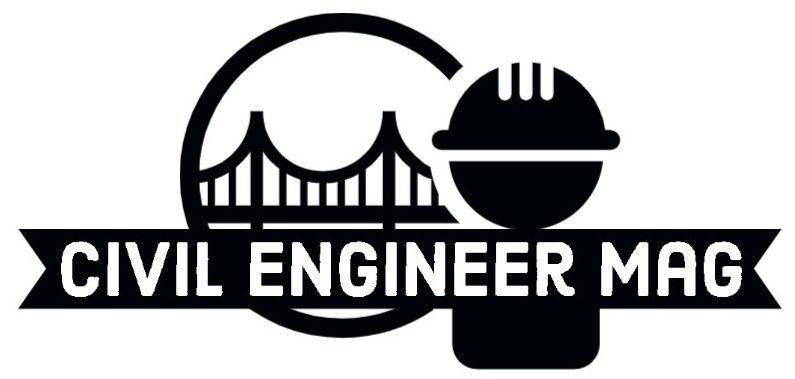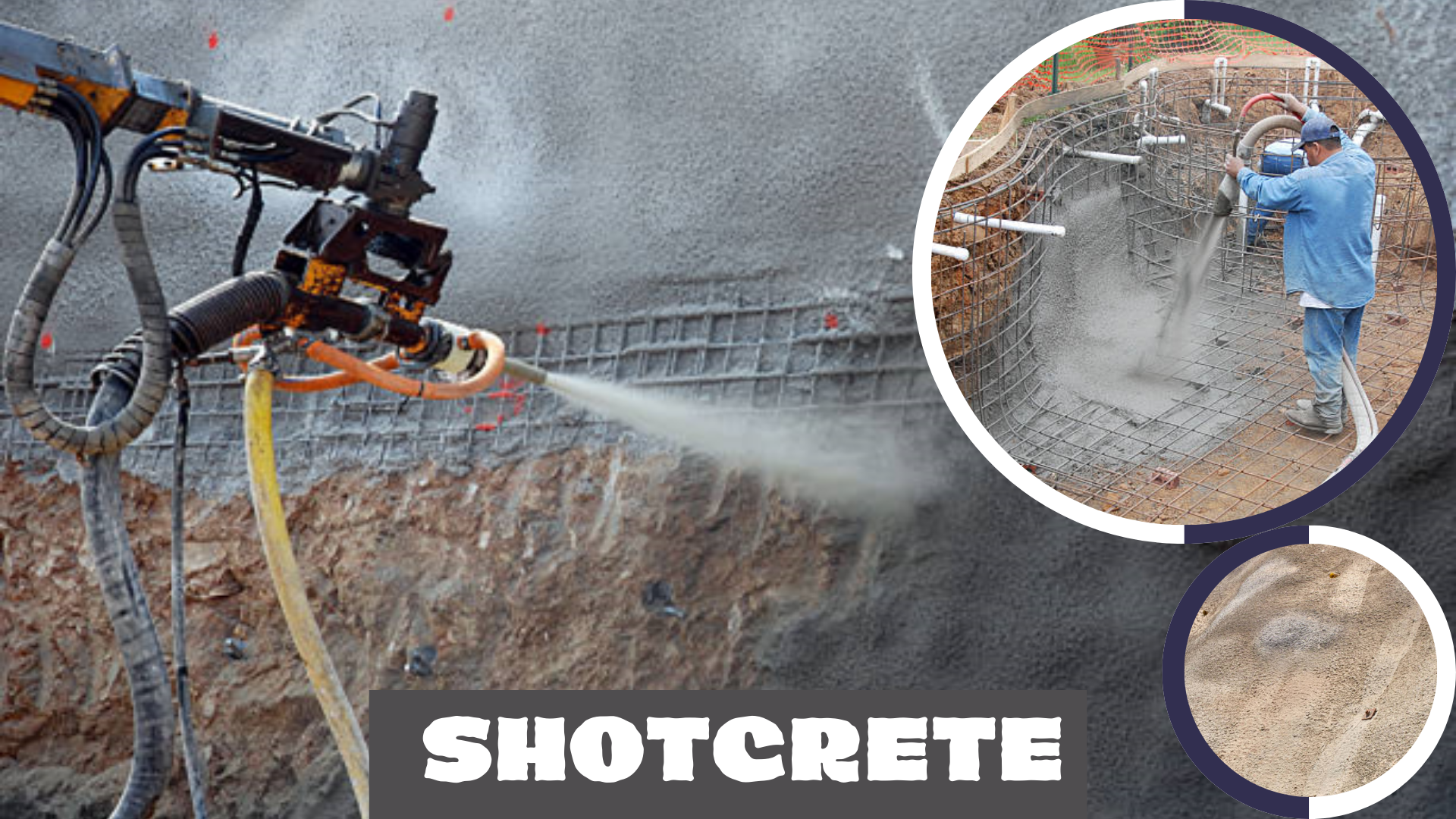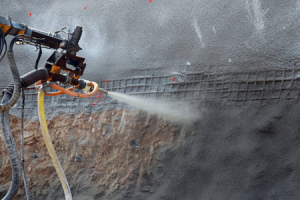What is Shotcrete?
Shotcrete is a method of applying concrete or mortar through a hose and nozzle at high velocity onto a surface. It is also known as sprayed concrete or gunite. The term “shotcrete” is derived from the process of “shooting” or spraying the concrete material.
Shotcrete is commonly used in construction and civil engineering projects where it is necessary to shape or reinforce structures, such as tunnels, swimming pools, retaining walls, or slope stabilization. The high velocity at which the concrete is projected onto the surface allows for efficient application and bonding.
There are two primary methods of applying shotcrete:
- Dry Mix Process
- Wet Mix Process
Dry-Mix Process
In this method, dry ingredients, including cement, aggregate, and sometimes admixtures, are pre-mixed. The dry mix is then conveyed through a hose, and water is added at the nozzle to create the wet mixture. Compressed air propels the mixture onto the surface.
Advantages of the Dry Mix Process
- Improved bonding ability and strength.
- The water content is adjusted at the nozzle’s end.
- Less waste is produced during the drying process.
- Low investment.
Disadvantages of the Dry Mix Process
- A skilled nozzleman was required to manage the water content of the mixture through nozzle tuning.
- Spraying is a difficult process.
- High release of dust.
- The nozzleman determines the mix’s water-cement ratio.
- Difficulty, in addition to additives.
Wet-Mix Process
In the wet-mix process, all the ingredients, including cement, aggregate, water, and admixtures, are combined in a central mixing plant to form a pre-mixed concrete or mortar. The prepared wet mix is then pumped through a hose to the nozzle, where compressed air propels it onto the surface.
Advantages of Wet Mix Process
- The water content (WC) is more precisely managed.
- The process has a lower cost.
- There is less labor required.
- The spraying procedure is simple.
- Less air is being consumed.
- Additives can be added based on the requirements of the design.
Disadvantages of the Wet Mix Process
- There is high material waste.
- Mixed transportation will require strict controls.
Applications of Shotcrete
Shotcrete is a versatile construction material and technique that finds applications in various industries and construction scenarios. Here are some common applications of shotcrete:
Structural repairs
Shotcrete is commonly used for repairing damaged concrete structures such as bridges, tunnels, dams, or buildings. It can restore the structural integrity and extend the lifespan of these structures.
Slope stabilization
Shotcrete is utilized to stabilize slopes, prevent erosion, and provide support to soil or rock formations. It is often employed in projects involving landslide mitigation or slope reinforcement.
Underground construction
Shotcrete is used for tunnel lining, underground mines, and shafts. It provides a durable and waterproof lining, offering protection against water ingress and ground movement.
Swimming pools and water features
Shotcrete is a popular choice for constructing swimming pools, waterfalls, and other water features due to its ability to create custom shapes and provide a watertight seal.
Architectural applications
Shotcrete is employed in architectural projects to create unique designs, sculptures, or decorative elements. It offers flexibility in design and can be finished with various textures or coatings.
Shotcrete is a widely adopted technique in the construction industry due to its efficiency, strength, and versatility. It provides a durable solution for a range of applications, from small-scale repairs to large-scale infrastructure projects.
Read also: Types of Stone Masonry | Types of Gabions | Fiber Cement Flooring | Steel Deck Installation and Construction | Types of Concrete Finishes
Shotcrete Equipment
Shotcrete equipment refers to the specialized machinery and tools used for the application of shotcrete. These equipment types are designed to mix, convey, and spray the shotcrete mixture onto surfaces. Here are some common shotcrete equipment:
Shotcrete Machine/Rig
A shotcrete machine, also known as a shotcrete rig, is the primary equipment used for shotcrete application. It consists of a hopper, mixing chamber, pumping system, and spraying nozzle. Shotcrete machines are available in various configurations, such as dry-mix or wet-mix, depending on the specific application requirements.
Dry-Mix Shotcrete Machines
Dry-mix machines are used in the dry mix process of shotcrete. They typically have a rotor-stator mechanism that mixes the dry shotcrete ingredients and delivers them to the nozzle. Water is added at the nozzle, and compressed air propels the mixture onto the surface.
Wet-Mix Shotcrete Machines
Wet-mix machines are used in the wet mix process of shotcrete. They have a twin-shaft or rotor-stator mixing system that combines the shotcrete ingredients with water to create a pre-mixed, pumpable slurry. The slurry is then pumped to the nozzle and sprayed onto the surface.
Air Compressor
An air compressor is used to provide compressed air to propel the shotcrete mixture from the machine nozzle onto the surface being sprayed. The compressed air helps atomize and distribute the shotcrete, ensuring proper compaction and adhesion.
Concrete Mixer
In the case of dry-mix shotcrete, a concrete mixer is used to mix the dry ingredients, such as cement, aggregates, and additives, before they are fed into the shotcrete machine hopper. The mixer ensures the proper blending and consistency of the dry shotcrete mix.
Reinforcement Equipment
Shotcrete applications may require the use of reinforcement materials, such as steel mesh, rebar, or fibers, to enhance the structural integrity of the sprayed concrete. Equipment like rebar cutters, tie wire tools, or mesh installation devices may be used to handle and position the reinforcement elements.
Nozzles and Accessories
Various types of nozzles and accessories are used to control the flow and pattern of the shotcrete during application. These include nozzle tips, air rings, extension pipes, and hose assemblies. Different nozzle configurations are available for specific spraying scenarios, such as overhead, vertical, or confined spaces.
Shotcrete Pump
For larger-scale shotcrete applications or where longer pumping distances are required, a shotcrete pump may be used. A shotcrete pump is a specialized pump designed to transport the shotcrete mixture from the mixing hopper to the application site. It provides high-pressure capabilities and can handle larger volumes of shotcrete material.
Shotcrete Robotic Arm
In certain applications, such as tunnel construction or slope stabilization, shotcrete robotic arms or spraying booms may be utilized. These robotic arms are remotely operated and can reach challenging or inaccessible areas, ensuring uniform and precise shotcrete application.
These are some of the key types of equipment used in shotcreting applications. The specific equipment required will depend on factors such as the type of shotcrete process (dry or wet mix), the scale of the project, and the application requirements. It is essential to use proper equipment and ensure its proper operation and maintenance to achieve high-quality shotcrete application.




Thanks for sharing this comprehensive overview of shotcrete. Shotcrete offers a versatile and durable solution for a wide range of construction needs. Great insights!